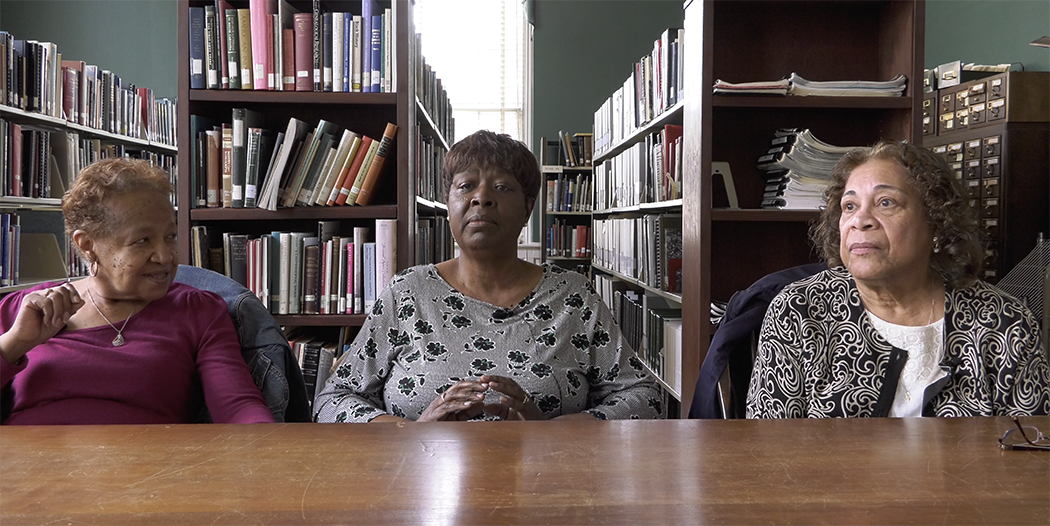The Jefferson-Madison Regional Library is the subject of Free and Open to the Public, a film documenting its 100-year history, and the Maupintown Media production offers something most organizations would rather avoid: an unvarnished look at a checkered past.
“The library was looking at its 100 years of service and the current state of public libraries in America…and that is something we want to celebrate and commemorate,” JMRL Director David Plunkett says. “But considering those 100 years, especially in Charlottesville and in the South, it was important for the library to tell a story about the institution. So while the organization now is free and open to the public and libraries are for everyone, there was a time when the institution was only for white families.”
Filmmaker Lorenzo Dickerson crafted Free and Open to the Public as a companion piece to JMRL’s “Celebrating 100 Years” exhibit, now on display at its downtown Central Branch. The exhibit traces the library’s history starting in 1916, when Virginia had fewer libraries than any other U.S. state. The local library network was launched in 1919 with a gift of land, one building, and books. The institution opened two years later.
Not a single Black person stepped into a JMRL building until 1934, however, when administrators made the library at the Jefferson School its Fourth Street Branch, which was open to Charlottesville’s African American population.
In 1942, JMRL officially integrated, closing its Fourth Street Branch and ostensibly opening its main location to people of color. Few Blacks actually used the library, though, and it was 10 years before JMRL hired its first African American employee. According to JMRL, the Gordon Avenue Branch’s opening in 1966 “marked a turning point in the integration of the public library system.”
Still, almost 60 years later, JMRL and libraries across the country are reckoning with program, personnel, and content diversity. As a filmmaker focused on social justice issues and African American history in and around Charlottesville, Dickerson is well suited to grapple with the library system’s issues through the years.
“It was a part of the plan from the beginning to tell a truthful and complete story of the library,” Dickerson says. “Over time, the library has become more intentional with the collections they offer the community. It’s certainly grown to be a more inclusive space over its 100 years.”
Dickerson’s film, which was not made available in full prior to its debut this month, promises to bring life and color to its companion exhibit. It will include interviews with former library employees and community members, trace the timeline of the library’s history, display vintage video and photography from multiple library branches, and tell stories to illuminate the past.
Nancy Key, a retired member of the Central Branch’s cataloguing department, talks of meeting longtime JMRL administrator Roland Buford as a child, and later working with him. Ruth Klippstein, former Scottsville Branch children’s librarian, tells the tale of bringing a domesticated wolf into the library for a kids’ program—and fearing that at any moment the animal would tear loose. (Spoiler alert: It didn’t.)
And of course, there are stories of regular folks and their love of books and libraries.
“Where I lived, it was walking distance,” former Gordon Avenue Branch librarian Mary Barbour says in a clip provided by Dickerson. “I think I spent most of my life in the library, especially the children’s area, reading books. Didn’t check ’em out. But then finally—I guess I was showing up so much—the librarian there [said], ‘I think you need a library card.’”
Plunkett says he hopes Dickerson’s film and the Central Branch in-person exhibit will bring more foot traffic to the library, which has flagged since COVID-19 struck—the pandemic being another era of JMRL’s history covered in Free and Open to the Public.
And the JMRL centennial might also serve to bring more attention to Dickerson’s work, something Plunkett says the library has celebrated for many years.
Dickerson and his Maupintown Media production company have produced six original documentaries detailing Charlottesville and Albemarle County’s race relations, each shining a light on a little-understood historical niche. There’s Color Line of Scrimmage, chronicling the 1956 Burley High School football team and its undefeated and unscored upon championship season, Anywhere But Here, about 13 African American men incarcerated in Charlottesville, and Byrdland, which tracks a formerly enslaved family from the plantation to their own land.
“JMRL has shown many of Lorenzo’s films at the library and hosted discussions,” Plunkett says. “We are longtime admirers. He just has the ability to tell a very personal and local story, but it resonates with what is happening in America.”

